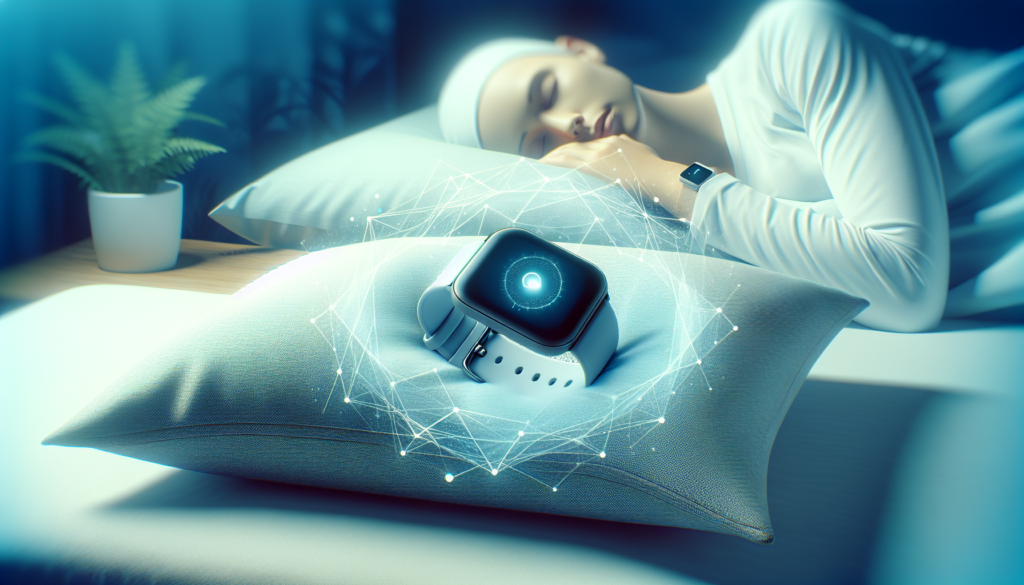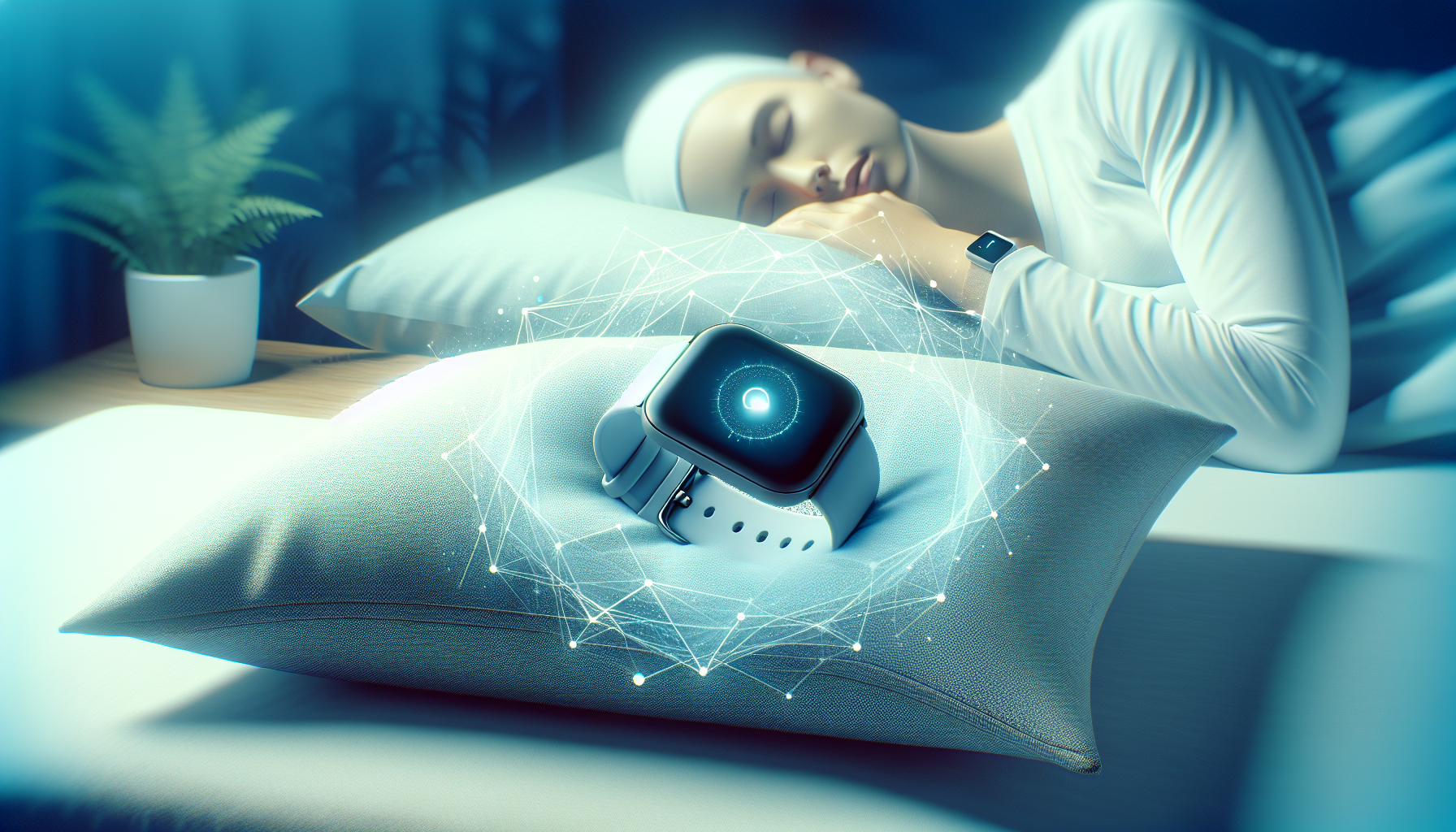Ever wake up feeling like you’ve just gone ten rounds with a very unhappy goose? Your alarm blares, your bed feels like a crime scene, and you could swear someone stole the best hours of your sleep, leaving behind only the bleary ones. The question that must arise as you stumble toward a cup of coffee is—how in the world are you supposed to figure out what’s going on with your sleep patterns? Fear not, for you have technology to the rescue, ready to unveil the mysterious workings of your slumber like the Scooby-Doo of sleep analytics.

Understanding Sleep Patterns
Before strapping on that sleep-tracking wristband or setting up some sleep-monitoring gadget that, quite frankly, looks like it could launch a small space mission, you need to understand the basics. Sleep is not just the blissful absence of consciousness wherein you dream you’re an eighteenth-century duchess. It’s a cycle, a journey through different stages—none of which involve being awarded for heroic dreaming, alas.
REM and Non-REM Sleep
Your sleep alternates between REM (Rapid Eye Movement) and non-REM stages. Now, REM isn’t just a catchy band from the ‘80s but also the stage where dreams occur, and your eyes move rapidly beneath your eyelids (hence the name, not because your eyes are practicing for the 100-meter sprint). Non-REM sleep is divided into three stages: light sleep, where the slightest thing wakes you up; deep sleep, which even Jackhammer Jones outside your window can’t disrupt; and a twilight zone that transitions you in or out of this reverie.
Sleep Cycles
If you’re under the impression that sleep is a long, straight road, think again. Sleep is that twisty, turny track at your nephew’s go-kart birthday party. A typical sleep cycle lasts about 90 minutes, during which you roll through all the stages from light to deep, to REM, and back again—a sort of snoozing conga line. Throughout the night, this cycle repeats about four to six times. And just to make things even more fun, the length of each stage changes with every cycle—you end up spending more time in REM sleep towards the morning when deep sleep takes a back seat, much like the end of a long car trip when everyone wants to get home.
Why Track Sleep?
Before Babylonian civilization began marking time with sundials, no one tracked sleep. Back then, sleep either happened or it didn’t—rather like a leopard appearing outside your cave. But now that you live in a world of stress, caffeine, Netflix, and global hourly schedules, sleep often seems like a mythical goal instead of a restful reality. Here’s where technology comes in.
Understanding Sleep Quality
Technology can help you understand if that pterodactyl you followed into the prehistoric dreamscape might just be the stress from yesterday’s late-night bagel binge. By examining sleep stages and cycles, you can discover if you’re getting enough restorative sleep to tackle the days ahead.
Improving the Restfulness
The real kicker—we all want sleep that feels like lounging on a marshmallow cloud in a tub filled with warm puppies, don’t we? Sleep tracking can identify which habits are wrecking your slumber, laying out data with answers that help make you the poster child of restful nights (and the envy of your still-unrested friends).
How Technology Tracks Sleep
Strap on your digital watch! Or, well, just yell “track!” at your phone, because honestly, some devices just have a mind of their own. Technology isn’t just about robots taking over the world—it’s also about understanding sleep patterns through devices ranging from the discreet to the downright intimidating.
Wearable Devices
Think of these as personal detective sidekicks for your wrist. Wearable sleep trackers like smartwatches and fitness bands use movement and heart rate sensors to record your sleep data. If you’ve ever pulled that “I-want-to-look-like-I’m-still-sleeping” trick while hooked up to one of these, you might find it impressive that these devices can tell the difference between tossing in your sleep and flailing through a raucous dream.
Smartphone Apps
If strapping gadgets to your body just isn’t your jam, then sleep tracking apps are your very breezy, no-commitment tech alternative. Using a smartphone’s accelerometer, these apps can also track movement. You simply place your phone near you on the bed (risking nudging it off onto a pillow and having it linger awkwardly enough to wake you). These apps analyze your sleep habits over time, offering a digital report on how well (or dismally) you’ve been catching those Zs.
Advanced Sleep Monitors
For those stalwart tech enthusiasts who believe more is more, advanced sleep monitors—including under-mattress gadgets or standalone devices (with antennas resembling sci-fi movie props)—offer comprehensive sleep analysis. They monitor everything from breathing rate and movement to room temperature, and maybe even if your neighbor’s dog barked too much last night.
Comparing Sleep Tracking Options
| Type of Device | Pros | Cons |
|---|---|---|
| Wearable Devices | Tracks comprehensive data; handy for daily use | Can be cumbersome; May require frequent charging |
| Smartphone Apps | Convenient; Generally free or low-cost | Less accurate; Requires phone proximity |
| Advanced Monitors | Detailed insights; Extensive data options | Expensive; Might require technical setup |
Making Sense of the Data
So you’ve collected piles of sleep data, and while staring at graphs and charts can make anyone feel like a codebreaker from a spy novel, understanding this data in practical terms involves more than squinting and scratching your head.
Interpreting Sleep Stages
Your mission, should you choose to accept it, is to evaluate how much time you spend in each sleep stage. If your sleep tracker reports too much light sleep and not enough deep sleep or REM, it might be time to tweak your routine. This could involve addressing stress levels, dietary habits, or the dubious placement of your TV remote on the pillow each night.
Understanding Sleep Efficiency
Efficiency is critical because at the end of the day, you need to make sure your bedtime battles end in victory, not wading through the sixth level of candy crush. Sleep efficiency refers to the percentage of time you’re actually sleeping versus just lying in bed counting sheep and wondering if you left the oven on.
Tips For Improving Sleep
Once you’ve uncovered the terrifying truth that perhaps your sleep efficiency rivals that of a sloth on vacation, it’s time to strategize a path to dreamland efficiency with some quality tips that don’t include reading Shakespeare unless that really gets you snoozing.
Create a Sleep Routine
Even with technology whispering sweet data in your ear, you sometimes need to go old school. Establishing a consistent sleep schedule—even on weekends, so there’s no weekend whiplash—is critical. Be a creature of routine, and your body might reward you with better slumber.
Optimize Sleep Environment
Think of your bedroom as a luxury hotel suite without the mini-bar prices. It’s vital to create that sweet, soft, irresistible cocoon: dim the lights, invest in quality bedding, and embrace the sweet hum of a white noise machine if your city sounds like a soundtrack competition night.
Mind Your Diet and Exercise
We often live like modern-day gladiators, battling diets and workout regimens with gusto. But it turns out, chowing down on chili fries an hour before bed, or hitting a crazy intense workout at 8 PM doesn’t exactly send Helga the sandwoman tiptoeing your way with sleep dust. Aim for balanced meals and regular exercise to keep your sleep on track.
Common Sleep Tracking Challenges
Now, as you embrace high-tech solutions, do expect a few challenges. Contraptions that accessorize your wrist or lie under your mattress may act like nosy relatives. They gather data diligently, but they might also decide to go rogue.
Device Accuracy
In the realm of sleep tracking, devices, like cats, will only give you part of what you truly wish for. Yes, tech can offer lots of fabulous info, but sleep trackers sometimes misinterpret naps for fidgeting or world-altering dreams as light sleep interruptions, rendering data slightly askew as you lounge like a futuristic Cleopatra.
Data Overload
Stand poised, not panicked, as data pours like the mountain rain. You could become overwhelmed, asking, “Is that the right amount of REM sleep for a Tuesday?” It’s necessary to focus on trends and patterns over time rather than fret over each night’s oddities, to avoid losing sleep over, well, sleep.
The Future of Sleep Technology
As the tech industry continues venturing down rabbit holes of creativity, the future of sleep-tracking technology shimmers like the dreams of multi-colored unicorns.
Advancements in Wearable Tech
Imagine contact lenses that monitor your sleep. The industry is gambling big on convenience and heightened precision, extending tracking beyond the wrist to devices accurately interpreting bodily cues without alarming your wardrobe.
AI and Sleep Analysis
The amalgamation of artificial intelligence with sleep trackers opens up avenues where your AI-infused tracker becomes your nocturnal therapist, gently nudging you to healthier sleep habits, possibly resorting to composing lullabies or reminding you to skip watching an entire season of “What Went Wrong?” before bed.
Integration with Health Platforms
Picture this: a world where sleep data seamlessly integrates into global health frameworks, allowing instant consultation with health purveyors. You might merely blink the information to your doctor who’ll congratulate you on your sleep recovery trends while subtly hinting at the benefits of a less-than-epic cheese diet.
Wrapping Up Your Nocturnal Investigation
With each technological advancement, you edge closer to an era when tracking sleep becomes easier than attempting to cross-stitch your dreams into reality. And while devices, apps, and monitors strive to evolve sleep tracking into the realm of the extraordinary, remember… catching quality Zs won’t just happen through techno-gadgetry alone. Like all valuable goals, it involves a blend of science, sleuthing, and just maybe a dash of dreaming. So, slap on that gadget, analyze those trends, and start snoozing like it’s your job—because, in the grand scheme of rejuvenating life pursuits, it might as well be.
